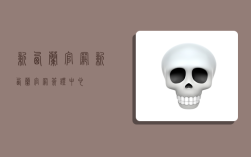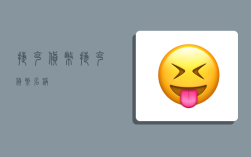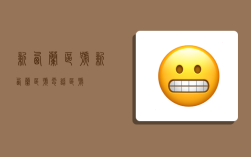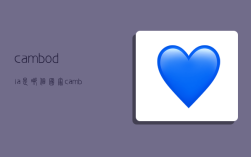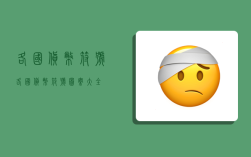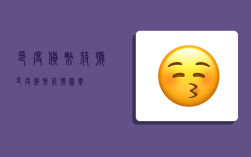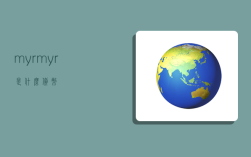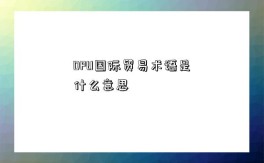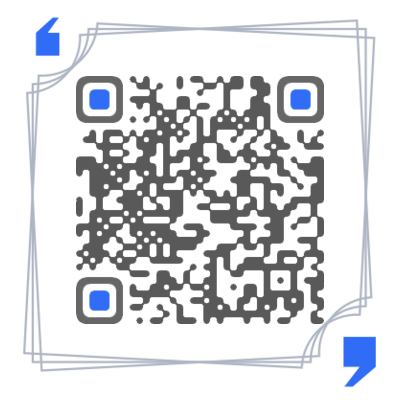NZD是什么货币,新西兰元是大洋洲国家新西兰的货币
NZD新西兰元是哪个国家货币,NZD新西兰元是什么货币?NZD是指新西兰元,NZD是新西兰元的英文简写,英文全称是New-Zealand-Dollar,NZD新西兰元是大洋洲国家新西兰的本土货币。新西兰元(New-Zealand-Dollar)标准符号:NZD,货币原有旧符号:($NZ.),辅币进位制:1NZD=100 cents(分)。
新西兰元(New Zealand Dollar 原符号:$NZ. 标准符号:NZD)
目录
|
新西兰元简介
新西兰元(货币代码:NZD)是新西兰、库克群岛、纽埃、托克劳及皮特凯恩群岛的法定货币,于1967年起使用。通常简称为$、NZ$或纽元,英语俗称Kiwi。一纽元可分为100新西兰仙。
新西兰元代替原本是新西兰法定货币的新西兰镑。2006年7月31日,新西兰储备银行引入新硬币,取消5仙硬币的流通地位,并以较细小的新硬币取代沿用的1毫,2毫及5毫硬币;而1元及2元则继续使用。
新西兰元,由新西兰中央银行——新西兰储备银行发行。
在1840年之前,新西兰市场流通的货币主要是英国的硬币,此外还有法国、荷兰等国的硬币。纸币很少,一般是由私营银行发行,用途只限于大额的支付。 1840 年新西兰首任总督根据1816年“英国皇家铸市法”宣布当时在新西兰流通的所有硬币为合法货币,包括各种用黄金、白银和青铜制造的硬币。1870年新西兰实施“皇家铸市法”,使皇家铸币成为官方货币。这一时期纸币的使用增加了。有六家银行各自发行自己的银行券,这些银行券的规格和图案都不一样,互相兑换也很困难。到 1924年,这些银行统一了银行券的规格和颜色,但仍不能互相兑换。1934年新西兰建立了储备银行,行使中央银行职责,开始发行统一的钞票。钞票面额为1镑、5镑和50镑,实行20进位制。1961年新西兰加入国际货币基金组织后规定新西兰镑含金量为2.47130克。1967年发行十进位的新货币新西兰元,含金量1.23565克,与英镑挂钩。1971年美元实行浮动汇率后,新西兰元改盯美元。1973年当美元再次贬值时,新西兰政府宣布放弃新西兰元与美元联系,实行有管理的自由浮动,其有效汇率值由该国主要贸易伙伴的一揽子货币决定。1983年8月,新西兰储备银行废除每日制定美元汇率的做法,允许新西兰元随国际金融市场上的行情变化而波动。1984 年底,取消几乎所有的外汇管制。1985年,新西兰采取伸缩性汇率制度,新西兰储备银行停止报出新西兰元的官方买卖价,但允许中央银行在市场失去秩序时干预市场,同时终止了与一揽子贸易加权货币挂钩。
新西兰元币值与换算
现流通的纸币有:1、2、5、10、20、50、100元等面额
现流通的铸币有:1、2、5、 10、20、50分及1、2元。
1新西兰元等于100分(Cents)
待翻译
The New Zealand Pound (1840 - 1967)
The pound was the currency of New Zealand between 1840 and 1967. Like the British pound, it was subdivided into 240 pennies or 20 shillings. 1 shilling = 12 pence. The currency was part of the sterling zone. It was replaced in 1967 by the dollar at a rate of 2 dollars = 1 pound (1 dollar = 10 shillings).
Written and Verbal Conventions
In writing, there were several conventions for representing amounts of money in pounds, shillings and pence:
£2.3s.6d. (two pounds, three shillings and six pence)
1/- (one shilling) (slang: a bob)
11d. (eleven pence)
1?d (a penny halfpenny, three halfpence – note that the "lf" in halfpenny/halfpence was always silent - they were pronounced 'haypenny' and 'haypence' - hence the occasional spellings "ha'penny" and "ha'pence")
2/6 (two shillings and six pence, usually pronounced as "two-and-six" or "half a crown")
2/- (two shillings, or one florin) (two bob)
4s.3d. ("four-and-threepence")
5s. (five shillings) (one crown) (five bob)
14-8-2 (fourteen pounds, eight shillings and tuppence – in columns of figures, such as in a ledger)
£1.10s.- (one pound, ten shillings) (thirty bob)
Halfpennies and farthings (quarter of a penny) were represented by the appropriate symbol after the whole pence.
A convention frequently used in retail pricing was to list prices over one pound all in shillings, rather than in pounds and shillings; for example, £4-18-0 would be written as 98/-.
The New Zealand Pre-decimal Coins
Intitally, British and Australian coins circulated in New Zealand. Distinct coins were introduced in 1933 in denominations of 3 and 6 pence, 1 shilling, 1 florin (2 shillings) and ? crown (2? shillings). All were minted in silver until 1947. In 1940, bronze ? and 1 penny coins were introduced. All denominations were issued until 1965.
Commemorative crowns (5 shillings) were minted in 1935, 1949 and 1953 for the Treaty of Waitangi, a royal visit and the coronation of Queen Elizabeth II, respectively.
Designs of New Zealand Pre-decimal Coins
| DENOMINATION | DESIGN |
|---|---|
| 1/2d (Halfpenny) | Maori Carving |
| 1d (Penny) | Tui Bird |
| 3d (Threepence) | Two carved patu (Maori weapons) |
| 6d (Sixpence) | Huia (an extinct New Zealand bird) |
| 1/- (Shilling) | Maori warrior holding a taiaha (weapon) |
| 2/- (Florin) | Kiwi Bird |
| 2/6 (Half Crown) | New Zealand Coat of Arms |
The New Zealand Pre-decimal Banknotes
Private trading banks originally issued all banknotes in New Zealand. The first bank notes were issued in New Zealand in 1840 by the Union Bank of Australia. In 1934 the Government of New Zealand passed the Reserve Bank Act which created the Reserve Bank of New Zealand. By virtue of the Act the Reserve Bank was given the sole right to issue New Zealand legal tender banknotes and coins.
The Reserve Bank of New Zealand introduced notes in 1934 for 10 shillings, 1, 5 and 50 pounds. In 1940, 10 pound notes were added. Only two series of notes were printed, the first (1934-40) featured the portrait of a Māori king, the second (1940-67) featured Captain James Cook.
The New Zealand Dollar (1967 - present)
In 1967, when the country decimalized its currency, the dollar replaced the New Zealand pound at a rate of 2 dollars = 1 pound. Like other dollar denominated currencies, the dollar sign "$" is used to express prices in New Zealand dollars, sometimes prices are written using NZ$ to distinguish it from other dollar currencies. The New Zealand dollar's ISO 4217 code is NZD. The value of the New Zealand dollar was initially pegged to the US dollar at a rate of US$1.39 = NZ$1. This rate changed on 21 November 1967 to US$1.12 = NZ$1 after the devaluation of the British pound, although the New Zealand dollar was devalued to a greater extent than the British pound sterling.
In 1971, the U.S.A. devalued its dollar relative to gold, leading New Zealand to peg its dollar at a value of US$1.216 with a 4.5% fluctuation range on 23 December (keeping the same gold value). From 9 July 1973 to 4 March 1985 the dollar's value was determined from a trade-weighted basket of currencies. Since 4 March 1985 the dollar's value has been determined by the financial markets, and has been in the range of about 0.39–0.74 United States dollars. The dollar's most recent minimum average daily value was 0.3922 U.S. dollars on 22 November 2000, and its most recent maximum was 0.7442 U.S. dollars on 17 March 2005. Much of this medium-term variation in the exchange rate has been attributed to differences in interest rates.
New Zealand Decimal Coins
In 1967, coins were introduced for 1, 2, 5, 10, 20 and 50 cents. The 1 and 2 cent coins were minted in bronze, with the other denominations in cupro-nickel. The 5, 10 and 20 cents were the same size as the earlier, equivalent 6 pence, 1 shilling and 1 florin. Indeed, until 1970, the 10 cents coin bore the additional legend "One Shilling". The obverse designs of all the coins featured Arnold Machin's portrait of Elizabeth II, with the legend ELIZABETH II NEW ZEALAND [date]. The reverse sides of coins introduced in 1967 did not follow the designs that were originally indended for them. Those modern art and sculpture themed designs were leaked to a newspaper and met a very negative public reaction. The final releases were given more conservative designs in line with public expectations.
In 1986, New Zealand adopted Raphael Maklouf's new portrait of the Queen on all its coins. The 1 and 2 cent coins were last minted for circulation in 1987, with collector coins being made for 1988. The coins were demonetised on 1 May 1990. The lack of 1 and 2 cent coins meant that cash transactions were normally rounded to the nearest 5 cents (10 cents as of 2006), a process known as Swedish rounding. Some larger retailers (notably one supermarket chain), in the interests of public relations, elected to round the total price down (so that $4.99 became $4.95 instead of $5.00). Alternatively, many retailers rounded all their prices to the nearest 5 cents to avoid the issue entirely, so a New Zealand shopper often encountered products for sale at prices like $4.95.
In 1990, aluminium-bronze 1 and 2 dollar coins were introduced to replace existing $1 and $2 notes. In 1999, Ian Rank-Broadley's portrait of the Queen was introduced and the legend rearranged to read NEW ZEALAND ELIZABETH II [date].
On 11 November 2004, the Reserve Bank announced that it proposed to take the 5¢ coin out of circulation and to make the existing 50, 20 and 10 cent coins smaller and use plated steel to make them lighter. After a three-month public submission period that ended on 4 February 2005, the Reserve Bank announced on 31 March it would go ahead with the proposed changes. The changeover period started on 31 July 2006, with the old coins usable up until 31 October 2006. The older 50, 20, 10 and 5 cent pieces are now no longer legal tender, but are still redeemable at the Reserve Bank.
New Zealand Dollar Banknotes
In 1967, notes were introduced by the Reserve Bank of New Zealand in denominations of 1, 2, 5, 10, 20 and 100 dollars. 50 dollar notes were added in 1983, whilst 1 and 2 dollar notes were discontinued in 1991. The first two series of notes (1967-81 and 1981-92) differed only in the portait of the Queen featured on the obverse. The reverses all depicted native birds and plants and remained unchanged through both series.
In 1992 A completely redesigned new series of banknotes was introduced by the Reserve Bank of New Zealand and except for the 20 dollars, the portrait of the Queen was dropped from all notes.
New Zealand banknotes, since 1999, have been printed on plastic polymer instead of conventional rag paper used for banknote production. There was a slight controversy, but this move was mostly met with curiosity by the public. Such polymer notes have many advantages, notably a photocopy can effortlessly be distinguished from the real thing by touch, and many people have been thankful that the notes go through a washing machine with no ill effects. The notes are also difficult to tear without the aid of a cutting tool, but will tear more easily than the paper notes if a tear is started. Initial versions of the polymer $5 note had issues with the ink wearing and aging prematurely, but this was rectified in later production runs. The Reserve Bank states that polymer banknotes last at least four times as long as the old conventional paper banknotes. The polymer banknotes also have vastly improved security features and are very difficult to counterfeit.
新西兰镑(1840-1967)。
英镑在1840至1967年间是新西兰的货币。
和英镑一样,它也被细分为240便士或20先令。
1先令=12便士。
该货币是英镑区域的一部分。
1967年被美元取代,汇率为2美元=1英镑(1美元=10先令)。
书面和口头公约。
在书面上,有几种用英镑、先令和便士表示金额的惯例:
GB 2.3s.6d。
(2英镑、3先令和6便士)。
1/-(一先令)(俚语:一先令)。
11d。
(11便士)。
1?D(一便士半便士,三半便士-注意Halfpenny/Halfpence中的“If”总是不发音--它们读作“haypenny”和“haypence”--因此偶尔会拼写成“ha‘penny”和“ha’pence”)。
2/6(2先令6便士,通常读作“2-6”或“半克朗”)。
2/-(两个先令,或一个弗罗林)(两个先令)。
4s.3d。
(《四三便士》)。
5S。
(5先令)(1克朗)(5先令)。
14-8-2(14英镑,8先令和两便士-以数字列表示,如在分类账中)。
GB 1.10-(1磅,10先令)(30英镑)。
半便士和法里尔(四分之一便士)在整便士之后用适当的符号表示。
零售定价中经常使用的一个惯例是,超过一磅的价格全部以先令标价,而不是以英镑和先令标价;例如,GB 4-18-0将写成98/-。
新西兰十进制前硬币。
最初,英国和澳大利亚的硬币在新西兰流通。
1933年推出了不同的硬币,面额分别为3便士和6便士,1先令,1弗罗林(2先令)和?
皇冠(2?
先令)。
直到1947年,所有这些都是用银质铸造的。
1940年,铜牌?
并推出了1便士硬币。
所有面额的面额直到1965年才发行。
纪念王冠(5先令)分别铸造于1935年、1949年和1953年,分别用于《威坦哲条约》、王室访问和伊丽莎白二世女王的加冕典礼。
新西兰十进制前硬币的设计。
面额设计。
1/2d(半便士)毛利人雕刻。
1D(便士)途鸟。
3D(三便士)两个巴图雕刻品(毛利武器)。
6D(六便士)Huia(一种已灭绝的新西兰鸟)。
1/-(先令)毛利族战士手持taiaha(武器)。
2/-(弗洛林)猕猴桃。
2/6(半皇冠)新西兰纹章
新西兰十进制前钞票。
私人贸易银行最初在新西兰发行所有纸币。第一批纸币于1840年由澳大利亚联合银行在新西兰发行。1934年,新西兰政府通过了《储备银行法》,成立了新西兰储备银行。根据该法,储备银行被赋予发行新西兰法定货币纸币和硬币的独家权利。新西兰储备银行于1934年推出面值为10先令、1英镑、5英镑和50英镑的纸币。
1940年,面值为10英镑的钞票问世。只印制了两个系列的钞票,第一个(1934年至1940年)以MāOri国王的肖像为主题,第二个(1940年至1967年)以詹姆斯·库克船长为主题。
新西兰元(1967年至今)。1967年,当该国货币十进制时,美元取代了新西兰镑,汇率为2美元=1英镑。和其他以美元计价的货币一样,美元符号“$”被用来表示新西兰元的价格,有时价格是用新西兰元写的,以区别于其他美元货币。
新西兰元的ISO 4217代码是NZD。
新西兰元最初与美元挂钩的汇率为1.39美元=1新西兰元。1967年11月21日,在英镑贬值后,这一汇率改为1.12美元=1新西兰元,尽管新西兰元的贬值幅度大于英镑。1971年,美国使美元相对黄金贬值,导致新西兰将美元钉在1.216美元,12月23日波动幅度为4.5%(金价保持不变)。从1973年7月9日到1985年3月4日,美元的价值是从一篮子贸易加权货币中确定的。自1985年3月4日以来,美元的价值一直由金融市场决定,一直在大约0.39-0.74美元的范围内。美元最近的日均最低值是2000年11月22日的0.3922美元,最近的最高值是2005年3月17日的0.7442美元。汇率的这种中期波动在很大程度上归因于利率的差异。
新西兰十进制硬币。
1967年,硬币面世,面值分别为1、2、5、10、20和50美分。
1美分和2美分的硬币是用青铜铸造的,其他面额的硬币是铜镍。
5美分、10美分和20美分的大小与之前的一样,相当于6便士、1先令和1弗罗林。
事实上,直到1970年,10美分硬币都有额外的传说“1先令”。
所有硬币的正面设计都以阿诺德·马钦的伊丽莎白二世肖像为特色,并带有传说中的伊丽莎白二世新西兰[日期]。
1967年推出的硬币的反面没有遵循最初为其设计的图案。
这些以现代艺术和雕塑为主题的设计被泄露给一家报纸,引起了公众的非常负面反应。
最终的版本被赋予了更保守的设计,符合公众的预期。
1986年,新西兰在所有硬币上采用了拉斐尔·马克鲁夫的新女王肖像。
1美分和2美分硬币最后一次铸造流通是在1987年,收藏币是在1988年制造的。
这些硬币已于1990年5月1日停止流通。
缺少1美分和2美分硬币意味着现金交易通常四舍五入到最接近的5美分(2006年为10美分),这一过程被称为瑞典舍入。
一些较大的零售商(特别是一家连锁超市)出于公共关系的考虑,选择将总价下调(这样4.99美元就变成了4.95美元,而不是5.00美元)。
或者,许多零售商将所有价格四舍五入到最接近的5美分,以完全避免这个问题,因此新西兰购物者经常遇到价格像4.95美元这样的产品。
1990年,铝青铜1元和2元硬币被引入,以取代现有的1元和2元纸币。
1999年,伊恩·兰克-布罗德利的女王肖像被引入,传奇故事重新编排为新西兰伊丽莎白二世[日期]。
2004年11月11日,储备银行宣布,建议停止流通5美分硬币,并将现有的5角、2角和1角硬币缩小,并使用镀钢使其更轻。
在2005年2月4日结束了为期三个月的公开意见期后,储备银行于3月31日宣布将继续实施拟议的改革。
交接期于2006年7月31日开始,旧硬币的使用期限至2006年10月31日。
较老的50美分、20美分、10美分和5美分硬币现在不再是法定货币,但仍然可以在储备银行赎回。
新西兰元钞票。
1967年,新西兰储备银行发行了面额为1、2、5、10、20和100美元的纸币。
1983年增加了50美元纸币,而1美元和2美元纸币在1991年停止使用。
前两套纸币(1967-81年和1981-92年)的不同之处只在于正面的女王肖像。
所有的反转都描绘了当地的鸟类和植物,在两个系列中都保持不变。
1992年,新西兰储备银行推出了完全重新设计的新系列钞票,除了20美元外,所有钞票上都去掉了女王的肖像。
自1999年以来,新西兰纸币一直使用塑料聚合物印刷,而不是传统的用于纸币生产的碎布纸。
有一点争议,但这一举动大多引起了公众的好奇心。
这种聚合物钞票有很多优点,特别是通过触摸就可以毫不费力地将复印钞票与真钞区分开来,许多人对钞票经过洗衣机没有不良影响感到欣慰。
如果没有切割工具的帮助,纸币也很难撕毁,但如果开始撕毁,它会比纸质纸币更容易撕毁。
最初版本的聚合物5美元钞票存在墨水过早磨损和老化的问题,但在后来的生产运行中,这一问题得到了纠正。
储备银行表示,聚合物钞票的使用寿命至少是旧的传统纸币的四倍。
聚合物钞票还极大地改善了安全特征,而且很难假冒。
新西兰元样币
Reserve Bank of New Zealand - Pre-decimal Currency (1934 - 1967)
1 New Zealand Pound = 20 Shillings = 240 Pence
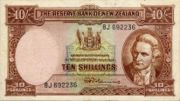 新西兰元-1967年版10先令面值——正面 | 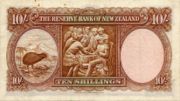 新西兰元-1967年版10先令面值——反面 |
 新西兰元-1967年版1磅面值——正面 |  新西兰元-1967年版1磅面值——反面 |
 新西兰元-1967年版5磅面值——正面 |  新西兰元-1967年版5磅面值——反面 |
Reserve Bank of New Zealand - Decimal Currency (1967 - Present)
2 New Zealand Dollars = 1 New Zealand Pound
1 New Zealand Dollar = 100 Cents
 新西兰元1975年版1面值——正面 |  新西兰元1975年版1面值——反面 |
 新西兰元1977年版2面值——正面 |  新西兰元1977年版2面值——反面 |
 新西兰元1968年版5面值——正面 |  新西兰元1968年版5面值——反面 |
 新西兰元1968年版10面值——正面 |  新西兰元1968年版10面值——反面 |
 新西兰元1967年版20面值——正面 |  新西兰元1967年版20面值——反面 |
 新西兰元1989年版1面值——正面 |  新西兰元1989年版1面值——反面 |
 新西兰元1985年版2面值——正面 |  新西兰元1985年版2面值——反面 |
 新西兰元1989年版2面值——正面 |  新西兰元1989年版2面值——反面 |
 新西兰元1985年版5面值——正面 |  新西兰元1985年版5面值——反面 |
 新西兰元1989年版10面值——正面 |  新西兰元1989年版10面值——反面 |
 新西兰元1985年版20面值——正面 |  新西兰元1985年版20面值——反面 |
新西兰元1981年 |
NZD是什么货币,新西兰元是大洋洲国家新西兰的货币
NZD是什么货币,新西兰元是大洋洲国家新西兰的货币发表于2023-03-20,由周林编辑,文章《NZD是什么货币,新西兰元是大洋洲国家新西兰的货币》由admin于2023年03月20日发布于本网,共13425个字,共5300人围观,目录为货币百科,如果您还要了解相关内容敬请点击下方标签,便可快捷查找与文章《NZD是什么货币,新西兰元是大洋洲国家新西兰的货币》相关的内容。
版权声明:
文章:(NZD是什么货币,新西兰元是大洋洲国家新西兰的货币),来源:新西兰,阅读原文。
NZD是什么货币,新西兰元是大洋洲国家新西兰的货币若有[原创]标注,均为本站原创文章,任何内容仅供学习参考,未经允许不得转载,任何内容不得引用,文章若为转载文章,请注明作者来源,本站仅为分享知识,不参与商业活动,若有侵权请联系管理删除



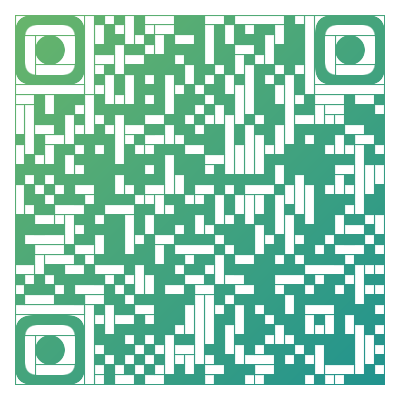 微信扫一扫打赏
微信扫一扫打赏
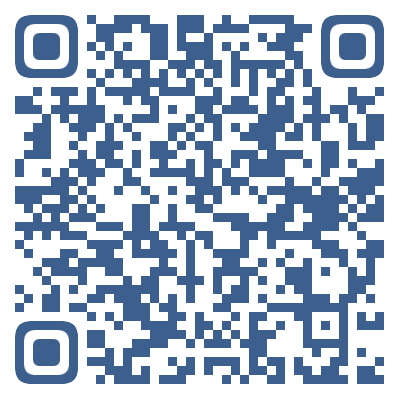 支付宝扫一扫打赏
支付宝扫一扫打赏
